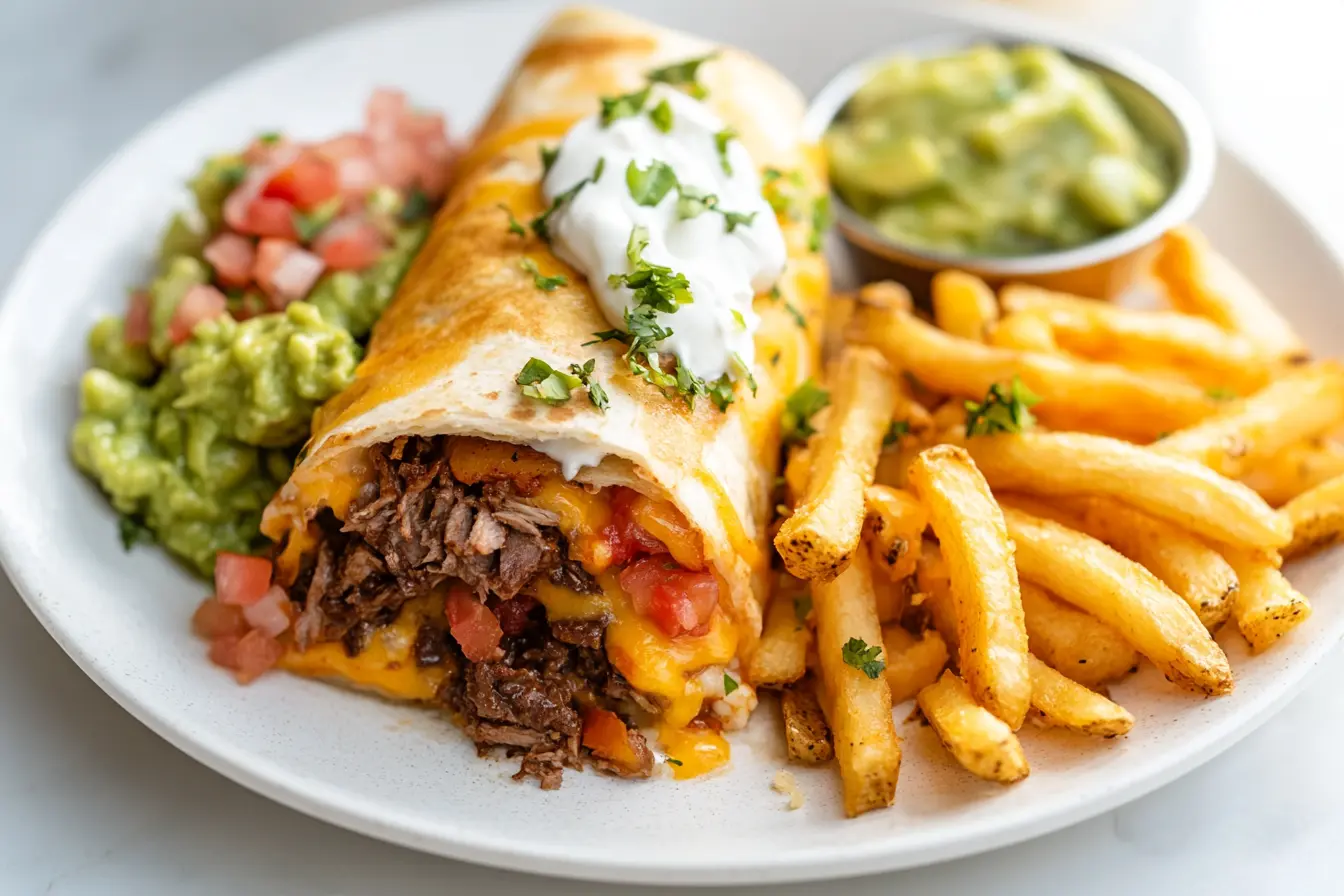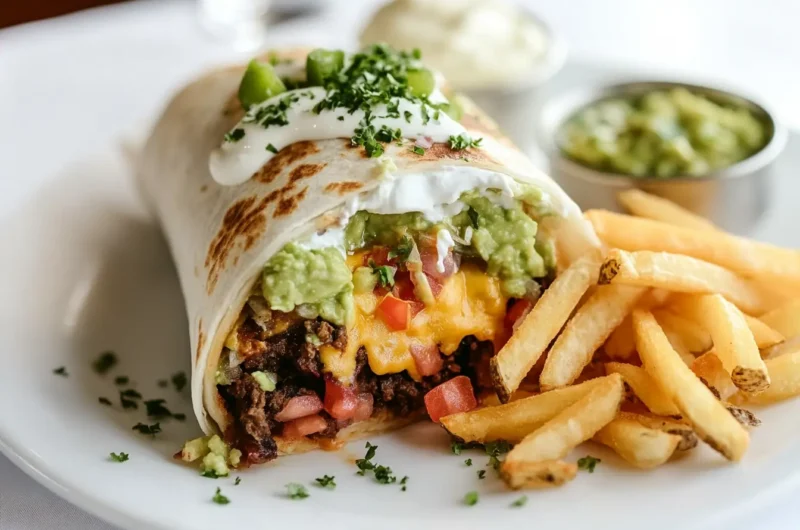Dive Into the World of the Cali Burrito
The California burrito, a culinary treasure born in the streets of San Diego, California, is where authentic Mexican flavors meet bold, inventive twists. This iconic burrito swaps the traditional rice and beans for crispy, golden French fries, creating a unique texture and an irresistible crunch that sets it apart. Get ready to experience a true taste of Southern California!
Cali Burrito Recipe
Course: LunchCuisine: Mexican, AmericanDifficulty: Easy4
servings20
minutes30
minutesApproximately 700 kcal per serving
kcalWith these detailed ingredients and steps, your Cali Burrito will be a crowd-pleasing masterpiece, blending San Diego’s iconic flavors with your unique touch.
Ingredients
Burrito Base, The Cali Burrito is all about bold, satisfying flavors and textures. Here’s what you’ll need to create this iconic dish:
4 large flour tortillas (10–12 inches): Soft and pliable for wrapping all the delicious fillings.
1 lb (450g) carne asada: Marinated and grilled steak is the classic choice, but feel free to substitute with grilled chicken, carnitas, or a plant-based protein for a vegetarian option.
2 cups French fries: Use homemade or frozen fries, cooked until crispy for that signature Cali Burrito crunch.
1 cup shredded cheddar cheese: Adds creamy, melty goodness. Pepper Jack or a Mexican blend can be used for variety.
1 cup guacamole: Creamy and fresh, it ties all the flavors together (see recipe below).
1/2 cup sour cream: For a tangy, cooling element.
1/2 cup pico de gallo: A fresh tomato salsa to add brightness and acidity.
1/2 cup shredded lettuce (optional): Adds a crunchy, refreshing layer.
1/4 cup sliced jalapeños (optional): For a spicy kick.
For the Guacamole, Homemade guacamole ensures a rich, authentic flavor:
2 ripe avocados: Perfectly creamy and easy to mash.
1 lime (juiced): Adds brightness and prevents the avocados from browning.
1/4 cup finely chopped red onion: For a mild, sweet crunch.
2 tbsp chopped cilantro: Adds freshness and an herby finish.
1/2 tsp salt: Adjust to taste.
1 small jalapeño (optional): Seeded and finely chopped for subtle heat.
Optional Condiments, Enhance your Cali Burrito with these flavorful toppings and sauces:
Salsa roja or hot sauce: For an extra layer of spice.
Chipotle mayo or spicy aioli: Adds a smoky, creamy element that complements the carne asada.
Pro Tips for Success
Warm the Tortillas: Heat each tortilla briefly in a dry skillet or microwave to make them more pliable for wrapping.
Layer Strategically: Place the cheese directly on the warm fries or meat to help it melt naturally.
Customize Your Fillings: Add pickled onions, roasted peppers, or black beans to make your burrito uniquely yours.
Directions
- Prepare the Carne Asada (or Your Protein)
Marinate the Steak: In a bowl, combine:1/4 cup olive oil
3 tbsp lime juice
2 minced garlic cloves
1 tsp chili powder
1/2 tsp cumin
1/2 tsp paprika
Salt and pepper to taste
Coat the steak evenly and marinate in the refrigerator for at least 30 minutes or up to 4 hours.
Cook the Steak: Grill or pan-sear the steak over high heat until medium-rare (about 4–5 minutes per side) or to your preferred doneness.Let the steak rest for 5 minutes, then slice it thinly against the grain to ensure tender bites.
Pro Tip: Substitute with grilled chicken, shrimp, or black beans for variety. - Cook the French Fries
Prepare the fries by baking, frying, or air frying until they are golden and crispy.
Season immediately with a pinch of salt to enhance flavor.
Pro Tip: Use seasoned fries (e.g., Cajun or chili lime) for an extra flavor boost. - Make the Guacamole
In a medium bowl, mash 2 ripe avocados with a fork until smooth but slightly chunky.
Mix in:Juice of 1 lime
1/4 cup finely chopped red onion
2 tbsp chopped cilantro
1/2 tsp salt
Optional: 1 small jalapeño, finely chopped (seeded for less heat)
Adjust the seasoning to taste. - Warm the Tortillas
Heat each flour tortilla in a dry skillet over medium heat for 15–20 seconds per side, or until warm and pliable.
Pro Tip: Keep the tortillas warm by wrapping them in a clean kitchen towel while you assemble the burritos. - Assemble the Burrito
Lay a warm tortilla flat on a clean surface.
Layer the ingredients in the center, leaving about 1 inch of space around the edges:Spread 2 tbsp sour cream.
Add a handful of crispy French fries.
Layer the sliced carne asada on top.
Sprinkle shredded cheddar cheese over the steak and fries.
Add a dollop of guacamole and a scoop of pico de gallo.
Optional toppings: shredded lettuce, sliced jalapeños, or a drizzle of salsa or hot sauce. - Fold the Burrito
Fold the sides of the tortilla inward to enclose the filling.
Roll the burrito tightly from the bottom to the top, tucking in the sides as you go for a secure wrap. - Toast the Burrito (Optional)
Heat a dry skillet over medium heat.
Place the rolled burrito seam side down in the skillet.
Cook for 2–3 minutes per side, or until golden and crispy. - Pro Tips for Success
Customization: Swap carne asada for grilled shrimp, roasted vegetables, or plant-based protein for a vegetarian twist.
Meal Prep: Double the recipe and wrap extras tightly in foil for freezing. Reheat in a skillet or oven for best results.
Add Spice: Include hot sauce, chipotle mayo, or spicy salsa inside the burrito for an extra kick of flavor.
Table of Contents
Key Features of a Cali Burrito: What Makes It Special?
The California burrito is more than just a meal—it’s a flavor-packed experience that embodies the bold culinary creativity and regional pride of San Diego, California. Celebrated for its unique combination of textures and flavors, this burrito stands out by showcasing local ingredients and a simplified yet satisfying approach.
Core Ingredients
At the heart of the California Burrito are these signature components:
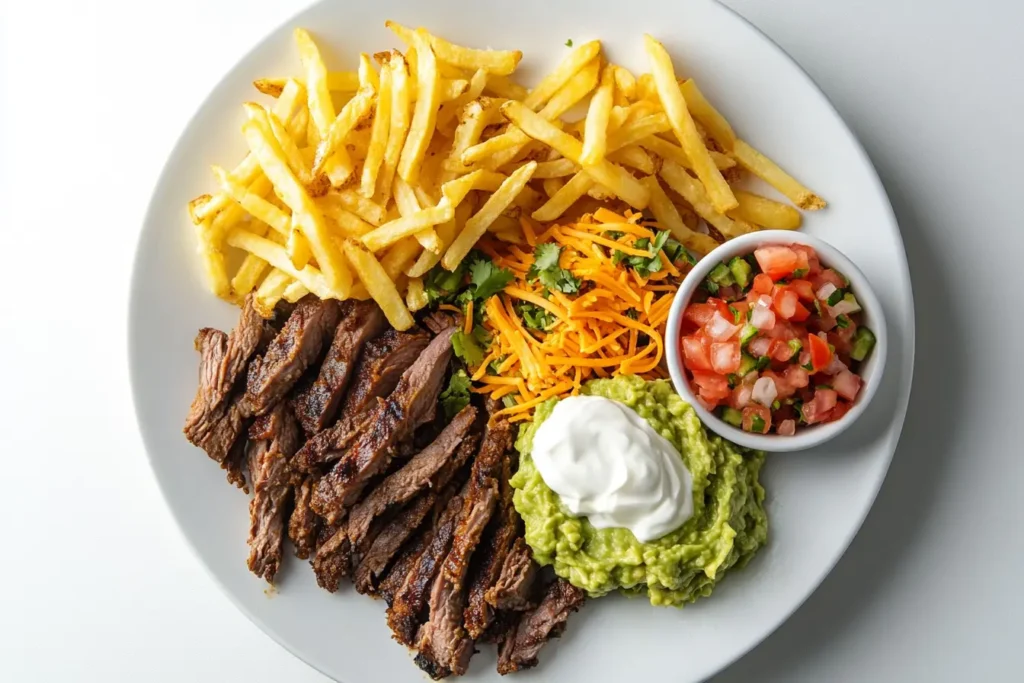
- Carne Asada: Perfectly marinated and grilled steak, providing smoky, savory notes.
- French Fries: Crispy, golden fries replace rice and beans, adding a satisfying crunch.
- Cheese: Melted shredded cheese (cheddar or Mexican blend) for creamy, melty goodness.
- Guacamole: Fresh, creamy guacamole made with ripe avocados, lime, and cilantro.
- Sour Cream: Tangy, cooling sour cream to balance the flavors.
- Salsa: Fresh and zesty salsa (pico de gallo or roasted red salsa).
How It Differs from Other Burrito Styles
The Cali burrito takes a unique approach, setting itself apart from the Mission burrito, which originated in San Francisco. Taste Atlas’s Guide to Mexican Food offers great insights on these differences.
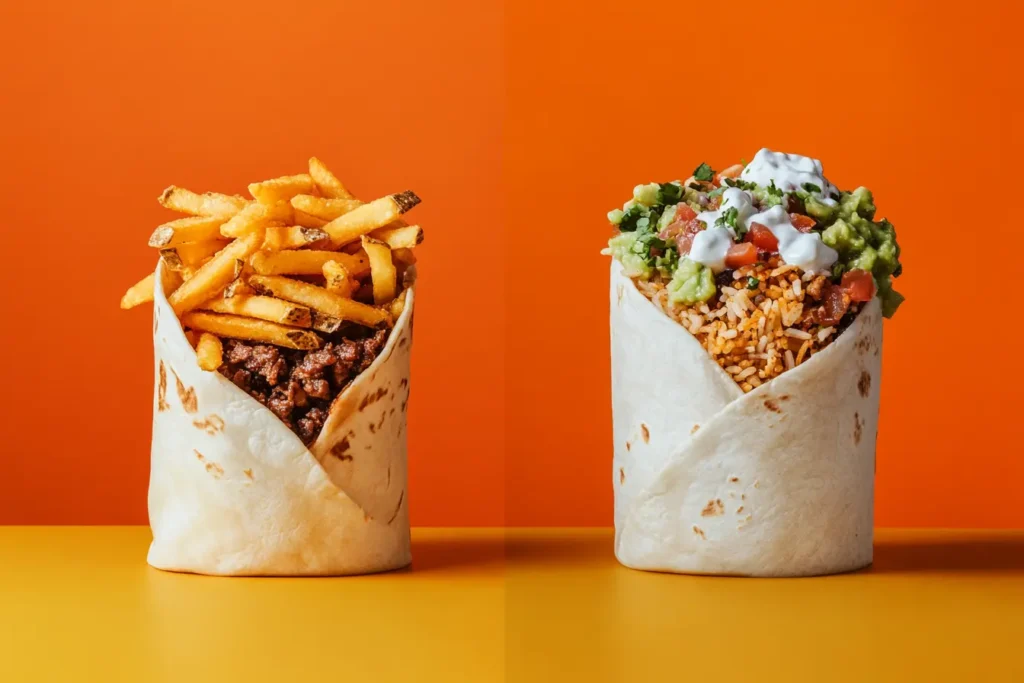
- Focus on Simplicity: Fewer ingredients that pack maximum flavor.
- Emphasis on Texture: Harmony of textures with crispy fries, tender steak, and creamy toppings.
- Compact and Manageable: Easier to handle without sacrificing flavor.
The Role of Fresh, Local Ingredients
The California burrito’s flavor profile is elevated by its reliance on fresh, high-quality ingredients, a hallmark of Southern California cuisine. Mexican Please highlights the influence of fresh ingredients in Mexican-inspired cuisine.
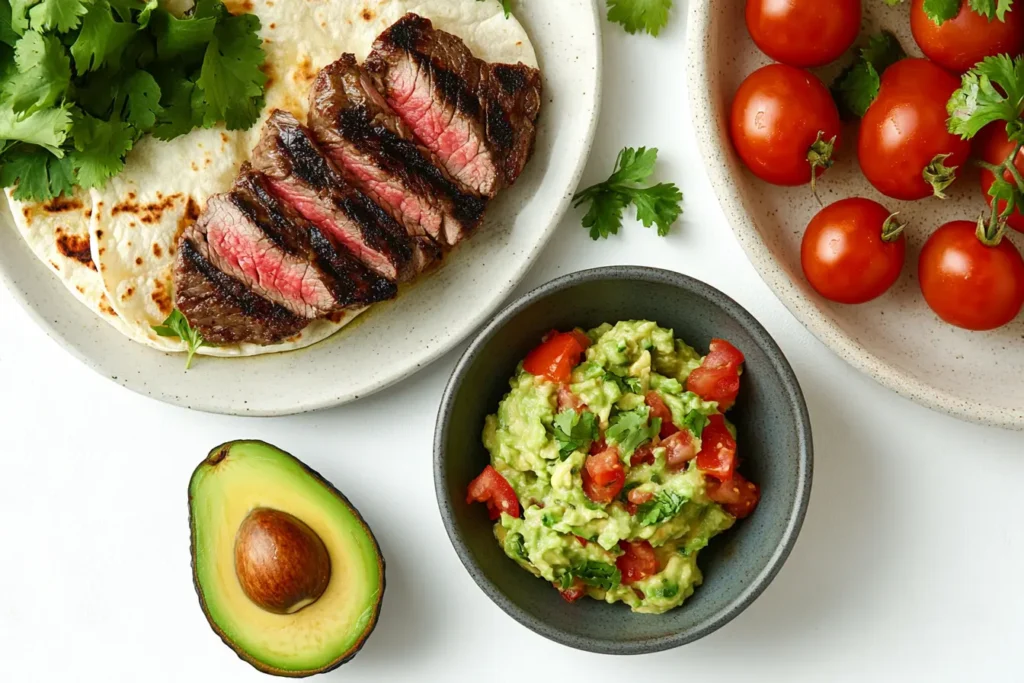
- Fresh Avocados: Locally sourced for creamy and flavorful guacamole.
- Ripe Tomatoes: Salsa is made with fresh, ripe tomatoes.
- Tender Steak: Cuts of steak are marinated and prepared daily.
The Cali burrito offers a fusion of cultures and flavors, combining traditional Mexican ingredients with an innovative, Southern California twist. What makes your California burrito unique? Try adding your favorite toppings or sauces to make this classic dish your own!
there’s some recipes from miscmeals
White Pizza with Spinach Recipe: Indulge in the rich, creamy goodness of a white pizza topped with fresh spinach. This easy-to-make recipe combines a garlic-infused sauce, gooey melted cheese, and vibrant spinach for a delicious twist on classic pizza. Whether you’re planning a cozy dinner or entertaining friends, this pizza is sure to impress. Click here for the full recipe and step-by-step instructions to make your own white pizza with spinach.
Brooklyn-Style Pizza: Transport yourself to the streets of New York with this Brooklyn-style pizza recipe. Featuring a thin, crispy crust and perfectly balanced toppings, it captures the essence of authentic New York-style pizza. Perfect for pizza lovers craving a true slice of the Big Apple at home! Find the recipe here and bring the iconic taste of Brooklyn to your table.
Mexican Rice in a Rice Cooker: Create restaurant-style Mexican rice effortlessly with this simple yet flavorful rice cooker recipe. Infused with tomatoes, garlic, and aromatic spices, it’s the perfect accompaniment to tacos, burritos, or any meal. Learn how to make it here and elevate your next dinner with this easy side dish.
Regional Variations and Popular Spots of The California Burrito
The Cali burrito has become a culinary icon that transcends its origins in San Diego, with each California region crafting its own unique interpretation of this beloved dish.
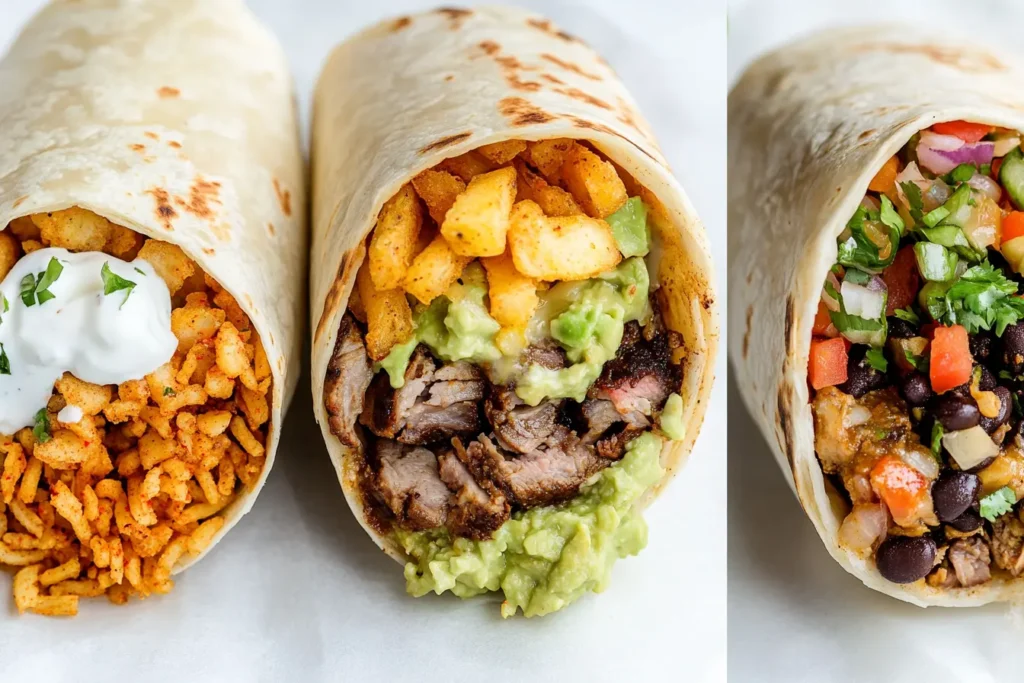
San Diego: The Birthplace
San Diego is the undisputed home, reflecting the city’s surf culture and love for bold flavors.
- Staple Characteristics: Carne asada, French fries, guacamole, sour cream, cheese, salsa.
- Minimalist Approach: Fresh, locally sourced ingredients.
- Surf Culture Influence: Hearty and satisfying.
Signature Spot: Lucha Libre Gourmet Tacos
Famous for its playful décor and inventive menu. Try the “Surfin’ California Burrito,” with shrimp alongside carne asada.
San Francisco: Mission-Style Meets Cali Burrito
San Francisco blends its Mission-style elements with the California burrito.
- Notable Variations: Larger portions, black beans, seasoned rice, and creative salsas.
Signature Spot: Taqueria El Farolito on Yelp
A cornerstone of San Francisco’s Mexican food scene, known for generous portions.
Los Angeles: Creative Fusion and Bold Twists
In Los Angeles, the Cali burrito becomes a canvas for experimentation.
- Key Features: Fusion influences (kimchi, roasted vegetables, pork belly), gourmet focus, artisanal tortillas.
Signature Spot: Sonoratown
Known for its house-made flour tortillas and refined Mexican dishes.
Each version speaks to the unique culinary identity of its region, proving that the Cali burrito is more than just a dish—it’s a reflection of California’s cultural and culinary diversity. Which regional take will you try first?
How the Cali Burrito Conquered the World: Global Adaptations
The Cali burrito has evolved into a global culinary icon, inspiring creative adaptations and influencing cuisines worldwide. The defining feature of the California burrito, the French fry, has sparked international interest.
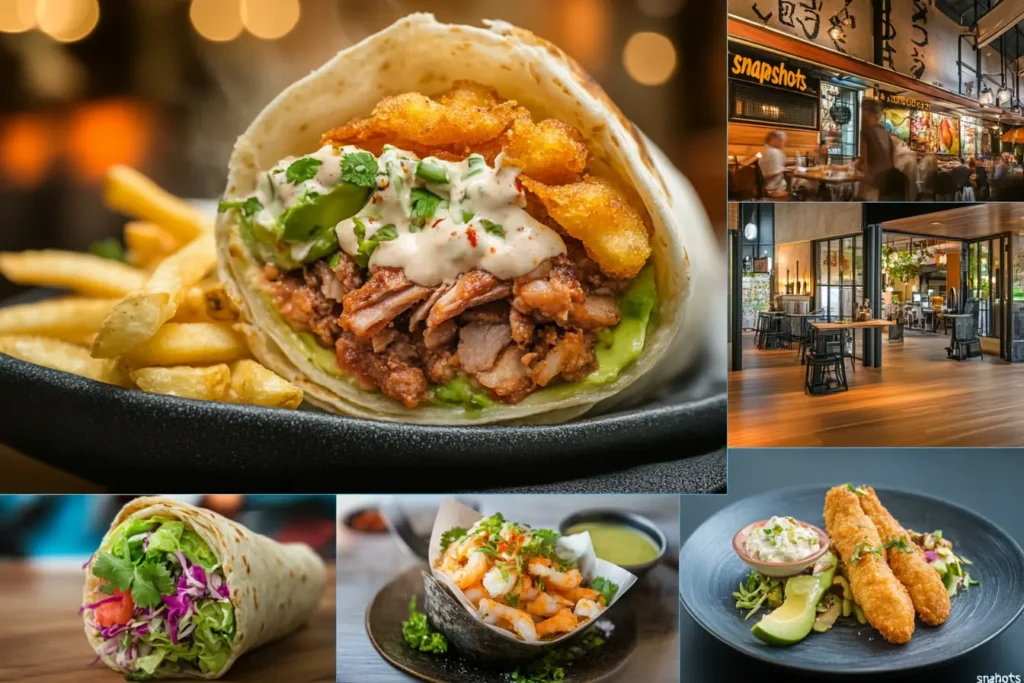
Influence on Other Cuisines
- Asian-Inspired Burritos: Tempura vegetables, kimchi, or teriyaki-marinated meats.
- Mediterranean Twists: Gyro meat or falafel with tzatziki sauce and hummus.
- European Wraps: Steak frites or roasted vegetables with specialty cheeses.
International Adaptations
- Japan: Tempura shrimp or vegetables with teriyaki-marinated beef.
- Australia: Avocado, grilled prawns, and citrus-based sauces.
- Europe: Paprika-seasoned fries, charcuterie meats, and specialty cheeses.
- Middle East: Shawarma-style with spiced meats and tahini sauce.
What’s your favorite global twist on the Cali burrito? Let us know how this iconic dish has inspired your culinary creations!
The Future of the California Burrito: Trends to Watch
The Cali burrito has established itself as more than a regional specialty; it’s a culinary symbol of fusion, adaptability, and creativity. Expect to see more California burritos featuring plant-based “meats” like Beyond Meat or Impossible Burger, along with continued international influence.
Nutritional Insights and Health Considerations
The Cali burrito, with its famously indulgent ingredients, offers a satisfying culinary experience. However, its rich composition also presents notable nutritional considerations. Understanding its nutritional profile empowers diners to make informed choices and explore healthier variations while still enjoying this San Diego staple’s bold flavors.
Nutritional Breakdown
A typical California burrito’s nutritional content can vary depending on portion size and specific ingredients. A standard serving generally contains:
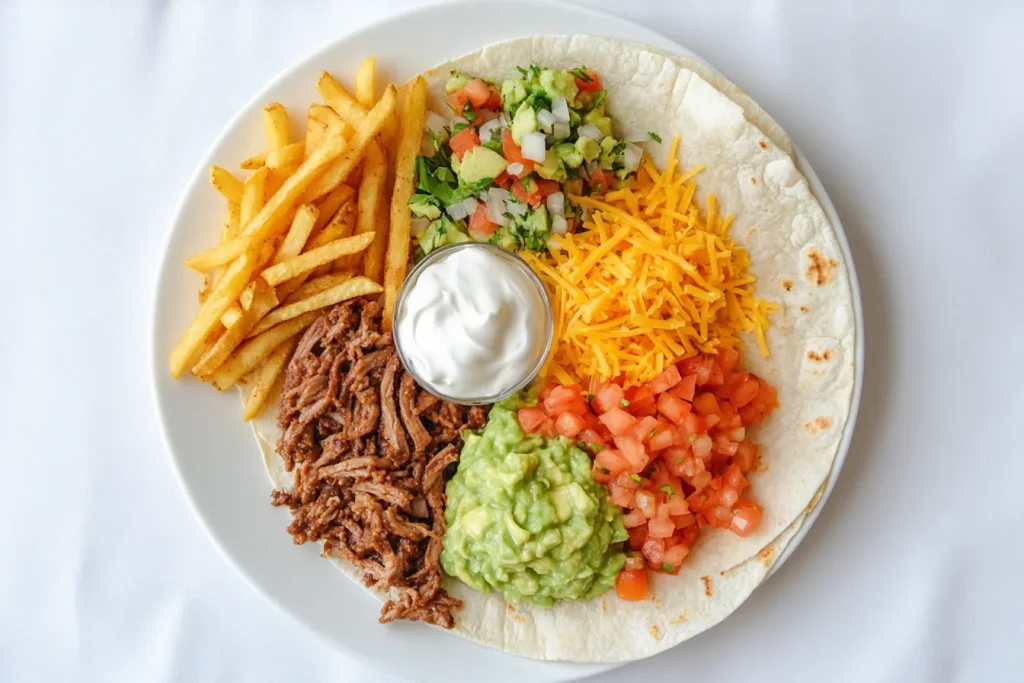
- Calories: Approximately 800–1,200. This is an estimate, and calorie counts can fluctuate significantly based on additions or subtractions.
- Protein: 25–35 grams, primarily derived from carne asada and cheese, contributing to satiety and muscle building.
- Carbohydrates: 60–80 grams, mainly from the tortilla and French fries, providing energy.
- Fat: 40–50 grams, contributed by guacamole, cheese, sour cream, and frying oil. A significant portion of this fat can be saturated, which, according to the American Heart Association, should be consumed in moderation.
- Sodium: Elevated levels due to seasoned meat, fries, and sauces. High sodium intake can contribute to increased blood pressure for some individuals.
While the California burrito provides a substantial protein boost and satisfying taste, its high calorie, fat (particularly saturated fat), and sodium content makes it a dish best enjoyed as an occasional indulgence, rather than a dietary staple.
For more detailed insights into dietary guidelines, consult resources from the FDA’s Dietary Recommendations: FDA Website
Healthier Variations
For those seeking to enjoy the California burrito with fewer calories and more beneficial nutrients, consider these effective modifications:
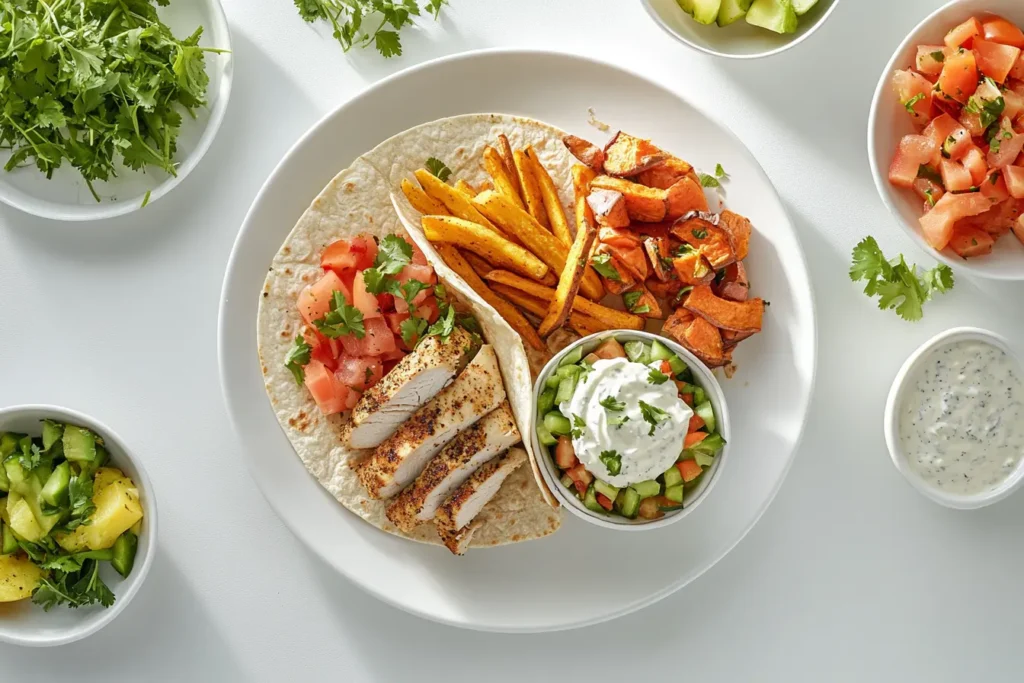
- Tortilla Transformation:
- Opt for a whole-grain tortilla for added fiber, which promotes satiety and aids in digestion.
- Choose a low-carb or gluten-free tortilla to reduce carbohydrate intake for those managing blood sugar levels or with gluten sensitivities.
- French Fry Alternatives:
- Replace traditional fries with baked sweet potato fries for a nutrient-rich source of Vitamin A and antioxidants.
- Incorporate roasted vegetables like zucchini, bell peppers, or mushrooms to add texture, flavor, and valuable micronutrients.
- Lean Protein Options:
- Substitute carne asada with grilled chicken, fish, or turkey for a leaner protein source with less saturated fat.
- Plant-based eaters can opt for tofu, tempeh, or seasoned jackfruit, all excellent sources of protein and fiber.
- Lighter Toppings:
- Swap sour cream for Greek yogurt. Greek yogurt offers a similar tangy texture but with a higher protein content and fewer calories.
- Reduce cheese quantities or select low-fat cheese to decrease saturated fat intake.
- Portion Awareness:
- Choose a smaller burrito or share a regular-sized one to reduce overall calorie consumption and prevent overeating.
Vegan and Vegetarian Adaptations
The Cali burrito’s adaptability allows for exciting plant-based creations that retain its signature flavors:
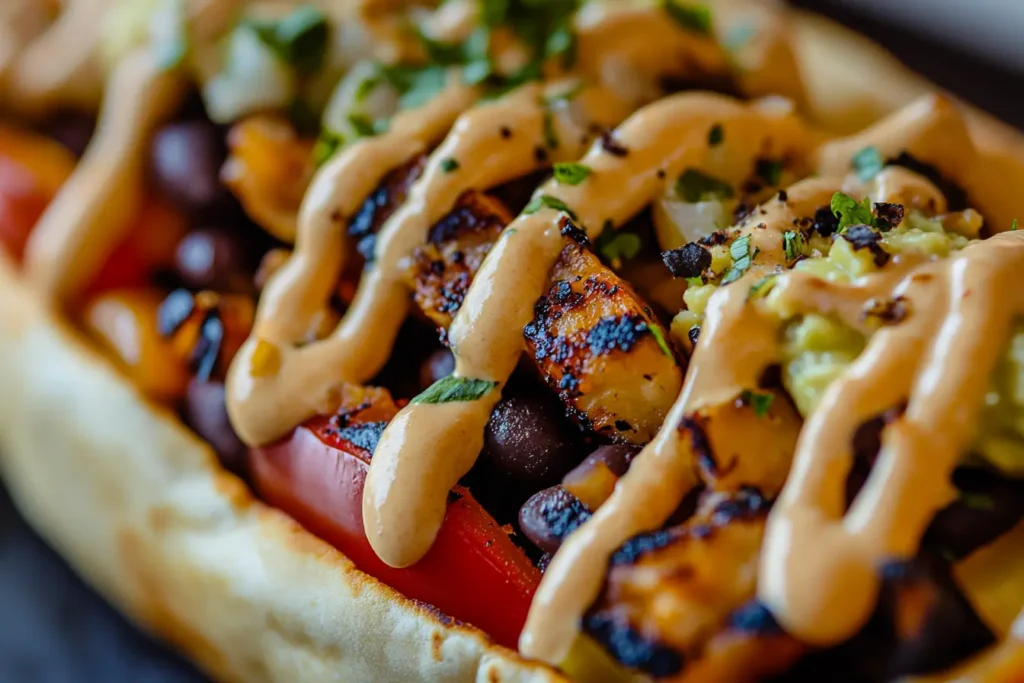
- Vegan Renditions:
- Replace carne asada with seasoned tofu, jackfruit, or plant-based crumbles, ensuring a satisfying and protein-rich alternative.
- Use vegan cheese and dairy-free sour cream alongside fresh guacamole for luscious, satisfying layers.
- Vegetarian Alternatives:
- Substitute meat with grilled vegetables like zucchini, mushrooms, and bell peppers, adding a burst of fresh flavor and essential vitamins.
- Incorporate black beans or refried beans to boost protein and fiber content, enhancing the nutritional profile.
- Flavor Enhancements:
- Incorporate toppings like pickled onions, salsa verde, or spicy aioli for an extra flavor dimension without adding unnecessary fats.
A Burrito for Every Lifestyle
The California burrito remains a versatile indulgence, readily adapting to diverse dietary needs and culinary preferences. Whether you prefer the classic version or explore health-conscious alternatives, the California burrito presents countless opportunities for customization while preserving its delicious identity.
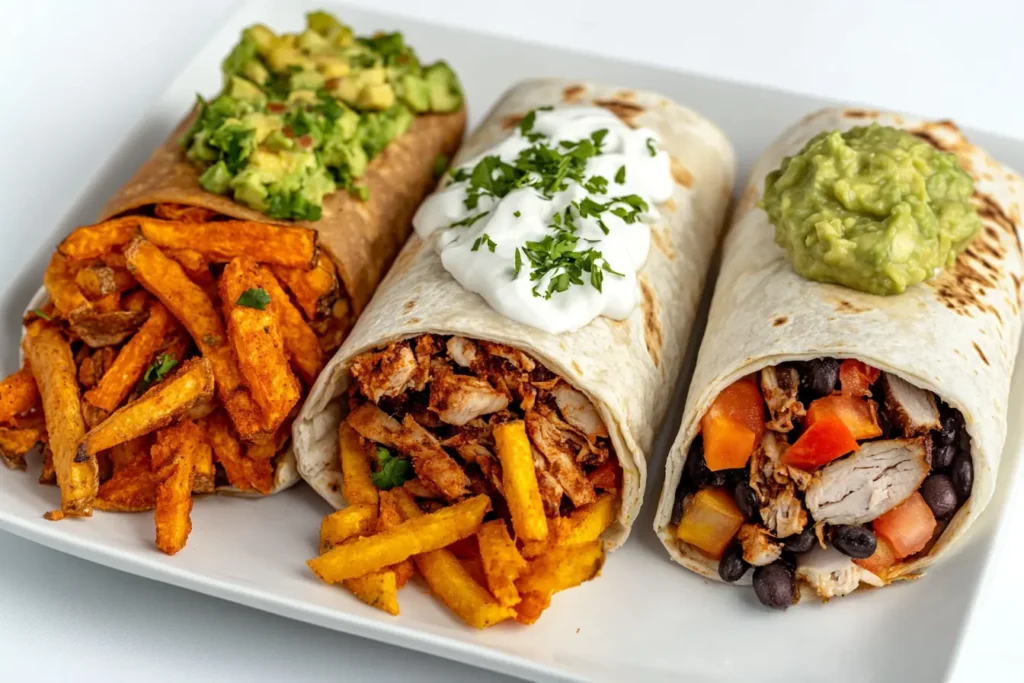
What’s your favorite twist on the California burrito? Share your creative takes and join the conversation celebrating this global culinary phenomenon!
Medical Disclaimer: This information is not intended to be a substitute for professional medical advice, diagnosis, or treatment. Always seek the advice of your physician or other qualified health provider with any questions you may have regarding a medical condition.
FAQs About California burritos
What Makes a Burrito a “Cali Burrito”?
A burrito earns the name u0022Cali burritou0022 because it features its signature ingredient: French fries. Indeed, this distinctive addition replaces traditional fillings like rice and beans, thus giving the burrito its characteristic texture and flavor. Moreover, other staples include carne asada, guacamole, shredded cheese, sour cream, and salsa. Consequently, the Cali burrito has become an icon of fusion cuisine. Furthermore, it reflects the blending of Mexican traditions and Southern California’s love for bold, hearty comfort food. In addition, its popularity continues to grow across the U.S. Therefore, whether you’re a burrito enthusiast or simply curious, the Cali burrito offers a delicious experience. Ultimately, it’s a dish that captures the essence of cultural fusion.
Are Cali Burritos Only Found in California?
While Cali burritos originated in San Diego, their popularity has spread far beyond California. Many taquerias across the United States and internationally now offer their own versions. However, the most authentic Cali burritos are still found in Southern California, where the tradition and fresh, local ingredients give them a unique flavor.
What’s the Best Meat for a Cali Burrito?
The classic choice is carne asada—grilled, marinated steak with a smoky and savory flavor. Alternatives like grilled chicken, carnitas, or even seafood (shrimp or fish) can also work, depending on personal preferences and regional variations.
Can I Make a Vegan Cali Burrito?
Absolutely, a vegan Cali burrito can include fries, seasoned tofu or jackfruit as a protein, dairy-free cheese, and vegan sour cream. Additionally, guacamole and salsa enhance the flavor profile. Moreover, this plant-based version retains the bold, hearty taste of the original. For example, seasoned jackfruit provides a texture similar to pulled meat. Likewise, dairy-free cheese melts beautifully, adding richness. Furthermore, vegan sour cream ensures creaminess without animal products. As a result, the vegan Cali burrito is a satisfying alternative. In contrast, traditional versions rely on animal-based ingredients. However, this recipe proves that plant-based options can be just as flavorful. Ultimately, the vegan Cali burrito is a delicious fusion of taste and sustainability.
Conclusion
The California burrito transcends its ingredients; it’s a cultural and culinary icon, embodying creativity, fusion, and the universal appeal of its vibrant and satisfying tastes. Born in San Diego’s dynamic food scene, this innovative twist on the traditional burrito has captivated food enthusiasts worldwide.
Its signature combination of carne asada, crispy French fries, guacamole, and fresh toppings captures the essence of Southern California, seamlessly blending Mexican tradition with American comfort. Over time, this culinary creation has inspired regional and international variations, all while staying true to its core identity.
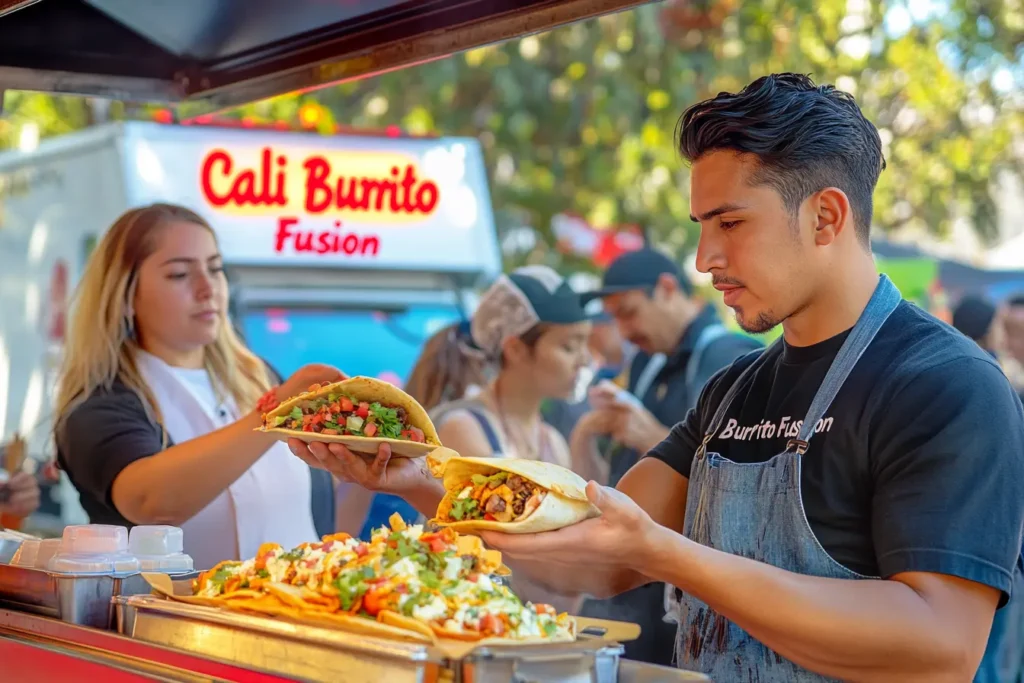
Whether enjoyed in its classic form or adapted to modern palates with vegan, vegetarian, or globally-inspired versions, this iconic dish remains remarkably versatile and satisfying. Its ability to evolve with culinary trends, all while retaining its distinctive profile, secures its place as a lasting cultural phenomenon.
As food trends increasingly embrace fusion and personalization, the California burrito is poised to remain a symbol of cultural exchange and culinary innovation, a powerful testament to the simple joy of delicious food.
What’s your favorite California burrito twist? Share your inspired creations in the comments below or on social media using #CaliBurritoCreations – let’s continue to celebrate this culinary icon together!

